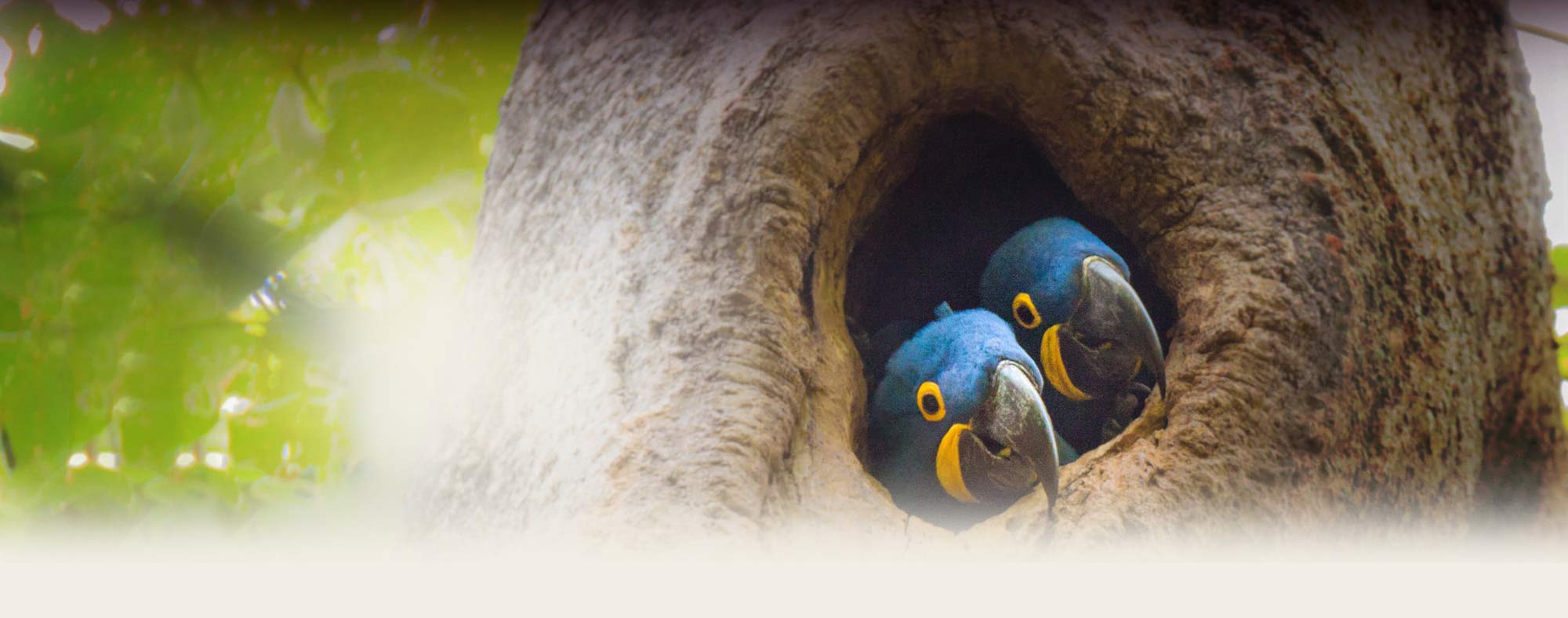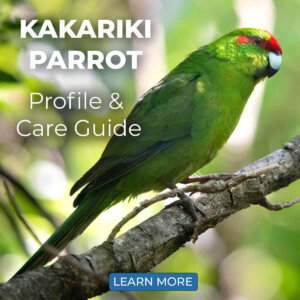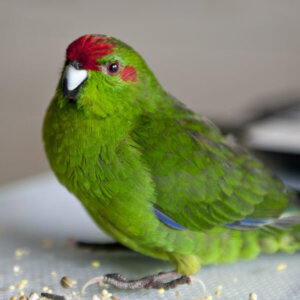What Do You Feed Kakarikis When Breeding: Essential Nutrition Guide
To successfully breed Kakarikis, you need to provide them with the right diet. This ensures their health and the health of their chicks.
Kakarikis, also known as New Zealand parakeets, are vibrant and energetic birds. Breeding them requires special attention to their nutrition. A balanced diet is vital for their reproductive health. It helps in producing healthy eggs and strong chicks. In this blog, we will explore the best foods to feed Kakarikis during breeding.
We will discuss the essential nutrients and how to provide them. Let’s dive into the details to ensure your Kakarikis thrive during the breeding season.
Introduction To Kakarikis Breeding
Breeding Kakarikis can be a rewarding experience for bird enthusiasts. These lively parrots are known for their playful nature and vibrant colors. Successful breeding requires attention to detail, especially in terms of nutrition. A well-balanced diet ensures healthy parents and robust chicks.
Breeding Overview
Understanding the breeding cycle of Kakarikis is essential. These birds typically breed in the spring and summer. Provide a safe and comfortable nest box. Ensure the environment is stress-free and quiet.
| Breeding Stage | Description |
|---|---|
| Courtship | Birds engage in bonding behaviors. |
| Nesting | Females lay eggs in the nest box. |
| Incubation | Eggs are incubated for about 20 days. |
| Chick Rearing | Parents feed chicks until they fledge. |
Importance Of Nutrition
Proper nutrition plays a crucial role in successful breeding. A balanced diet supports egg production and chick development. It also ensures the parents remain healthy and energetic.
Here are some key components of a breeding diet:
- Seeds: Provide a mix of high-quality seeds.
- Fresh Fruits: Apples, pears, and berries are great choices.
- Vegetables: Offer leafy greens, carrots, and peas.
- Protein: Hard-boiled eggs and mealworms support growth.
- Calcium: Cuttlebone and mineral blocks are essential.
Regularly monitor your Kakarikis’ diet. Adjust based on their needs. Always provide fresh water and clean feeding dishes daily.

Credit: lafeber.com
Nutritional Needs During Breeding
Breeding is a critical time for Kakarikis. They need extra nutrition for healthy eggs and strong chicks. During this period, their diet must be rich and balanced. This ensures the health of both the parents and the offspring. Let’s look at their specific nutritional needs.
Increased Nutritional Demand
Kakarikis need more food during breeding. Their bodies work harder, so they need more energy. High-quality seeds, fresh fruits, and vegetables are essential. Protein is also crucial. Provide boiled eggs, mealworms, or special breeding pellets. These foods support their higher energy needs.
Essential Vitamins And Minerals
Vitamins and minerals play a key role. Vitamin A helps with vision and immune health. Offer carrots and leafy greens. Vitamin D is vital for calcium absorption. It ensures strong bones and eggshells. Give them cuttlebone or mineral blocks.
Calcium is especially important. It supports egg production. Lack of calcium can lead to weak eggshells. Include calcium-rich foods like broccoli and kale. Zinc and iodine are also crucial. They support growth and metabolism. Provide a varied diet to ensure they get all these nutrients.
Protein-rich Diet
Feeding Kakarikis a protein-rich diet is vital during breeding. Protein helps support healthy growth and development of chicks. It also ensures the parent birds stay strong and energetic.
Sources Of Protein
Offer a variety of protein sources to your Kakarikis. Boiled eggs are a popular choice. They are easy to prepare and rich in protein. Cooked chicken can also be included. Ensure it is unseasoned and shredded into small pieces. Mealworms are another excellent source. They are high in protein and easy for birds to digest. Additionally, legumes such as lentils and chickpeas are good options. Cook them until soft to make them easier for birds to eat.
Benefits Of Protein
Protein supports muscle growth in chicks. It also aids in the development of feathers. Strong feathers are important for fledgling Kakarikis. Protein also boosts the immune system. This helps prevent diseases and infections. Parent birds benefit too. They need extra energy while caring for their young. Protein-rich foods help maintain their health and vitality.
Fresh Fruits And Vegetables
Fresh fruits and vegetables are essential for breeding Kakarikis. These foods provide vital nutrients and variety in their diet. They help in maintaining the health and energy levels needed for breeding. Including a range of fruits and vegetables ensures a balanced diet for your Kakarikis.
Recommended Fruits
Kakarikis enjoy many different fruits. Offer them apples, but remove the seeds. They also love bananas, which are full of potassium. Pears are another great choice, but ensure they are ripe. Berries, such as blueberries and strawberries, are packed with antioxidants. Grapes are also a favorite, but give them in moderation.
Recommended Vegetables
Vegetables are just as important as fruits. Carrots are a great source of vitamin A. Spinach provides iron and other essential minerals. Bell peppers are rich in vitamin C. Offer broccoli, which is full of fiber and nutrients. Peas are also a good option, supplying proteins and vitamins.
Supplements For Breeding Kakarikis
Breeding Kakarikis requires special care, especially in their diet. Supplements play a crucial role in ensuring healthy chicks and a successful breeding process. Proper nutrition supports the overall health and vitality of breeding Kakarikis.
Calcium Supplements
Calcium is vital for egg production. It strengthens the eggshells, preventing breakage. Offer cuttlebone or crushed eggshells as natural sources. Calcium supplements ensure the hens have enough for their needs.
Inadequate calcium can cause egg binding. This is a serious condition. Always provide a steady supply of calcium.
Vitamin Supplements
Vitamins boost the immune system. They support healthy growth in chicks. Vitamin A is essential for vision and skin health. Vitamin D3 aids calcium absorption.
Multivitamin supplements are available. They ensure Kakarikis get all necessary nutrients. Add these to their water or food.
Hydration And Fluids
When breeding Kakarikis, hydration is crucial. Proper fluids ensure they remain healthy and vibrant. Both water and supplementary fluids play key roles in their overall well-being. Let’s explore the importance of these fluids.
Importance Of Water
Water is essential for Kakarikis. It helps regulate their body temperature. Fresh water should be available at all times. Change their water daily to keep it clean. Contaminated water can harm their health. Use a shallow dish to prevent drowning.
Supplementary Fluids
Supplementary fluids can enhance their diet. These fluids include fruit juices and electrolyte solutions. Offer diluted fruit juices occasionally. They provide vitamins and hydration. Avoid sugary or acidic juices. Electrolyte solutions support their energy levels. They are especially useful during breeding periods. You can find these solutions at pet stores. Always consult a vet before introducing new fluids.
Foods To Avoid
Feeding Kakarikis while breeding is crucial for their health. Certain foods can be harmful or even toxic. It’s essential to know what to avoid to ensure their safety and well-being. Below are some guidelines on toxic foods and unhealthy treats.
Toxic Foods
Some foods are highly toxic to Kakarikis. Avoid these at all costs:
- Avocado: Contains persin, which can be deadly to birds.
- Chocolate: Theobromine in chocolate is toxic to birds.
- Caffeine: Found in coffee, tea, and soda, it is harmful to Kakarikis.
- Onions and Garlic: Can cause digestive issues and toxicity.
- Alcohol: Even small amounts can be dangerous.
Unhealthy Treats
While some treats may not be toxic, they can still be unhealthy:
- Salted Snacks: High salt content can lead to dehydration and kidney issues.
- Sugary Foods: Can cause obesity and other health problems.
- Processed Foods: Often contain harmful additives and preservatives.
- Fatty Foods: Can lead to liver issues and obesity.
- Junk Food: Lacks essential nutrients and can harm overall health.
Ensuring a proper diet is key to healthy breeding. Avoid these foods to keep your Kakarikis safe and healthy.
Sample Meal Plan
Creating a sample meal plan for breeding Kakarikis ensures they receive essential nutrients. A balanced diet helps maintain their health and supports successful breeding. Below is a detailed feeding schedule and diet example for your Kakarikis.
Daily Feeding Schedule
Feed your Kakarikis multiple times a day to keep them healthy and energetic. Here’s a suggested daily feeding schedule:
| Time | Food |
|---|---|
| Morning (7:00 AM) | Fresh fruits and vegetables |
| Midday (12:00 PM) | Pellets or seed mix |
| Afternoon (4:00 PM) | Cooked grains or legumes |
| Evening (7:00 PM) | Small treat (e.g., nuts) |
Balanced Diet Example
A balanced diet is crucial for breeding Kakarikis. Below are examples of foods to include in their diet:
- Fruits: Apples, bananas, berries
- Vegetables: Carrots, spinach, bell peppers
- Grains: Cooked quinoa, brown rice
- Legumes: Lentils, chickpeas
- Protein: Boiled eggs, cooked chicken
- Treats: Nuts, seeds
Here’s a balanced diet example for a day:
- Morning: Mixed fruit salad (apple, banana, berries)
- Midday: Pellets mixed with fresh vegetables (carrot, spinach)
- Afternoon: Cooked quinoa with lentils
- Evening: Small piece of boiled egg and a few nuts
Ensure fresh water is always available. A varied diet keeps your Kakarikis healthy and happy.
Monitoring Health And Nutrition
Monitoring the health and nutrition of Kakarikis is essential when breeding them. Proper care ensures your birds stay healthy and produce strong offspring. Let’s explore how to keep your Kakarikis in top condition.
Signs Of Good Health
Healthy Kakarikis have bright eyes and vibrant feathers. They are active and playful. Their appetite remains steady, and they have regular droppings. Watch for any changes in their behavior. Any lethargy or loss of appetite needs attention. Regular check-ups with a vet help ensure their well-being.
Adjusting The Diet
A balanced diet supports breeding Kakarikis. Provide a mix of seeds, fruits, and vegetables. Fresh water should always be available. Supplement their diet with calcium and vitamins. These nutrients aid in egg production and overall health. Adjust the diet based on their needs. Observe how they respond to different foods.

Credit: feistyfeathers.com

Credit: www.reddit.com
Frequently Asked Questions
What Is The Best Diet For Breeding Kakarikis?
A balanced diet for breeding Kakarikis includes fresh fruits, vegetables, seeds, and high-protein foods. Provide calcium supplements.
How Often Should I Feed Breeding Kakarikis?
Feed breeding Kakarikis twice daily. Ensure they have constant access to fresh water and a variety of nutritious foods.
Can Kakarikis Eat Boiled Eggs When Breeding?
Yes, boiled eggs are excellent for breeding Kakarikis. They provide essential proteins and nutrients necessary for their health.
Are Pellets Good For Breeding Kakarikis?
Pellets can be part of their diet. Ensure they are high-quality and supplemented with fresh fruits and vegetables.
Conclusion
Feeding Kakarikis the right diet is crucial during breeding. Offer a balanced mix of seeds, fruits, and vegetables. Include protein sources like boiled eggs. Fresh water is essential. Avoid avocados and chocolate. Monitor their health and adjust their diet if needed.
Proper nutrition supports healthy chicks. Happy breeding!
Hello Dear, I'm Poli Kolymnia, owner of many birds (including budgies).
With a deep passion for these feathered companions, I'm here to share my expertise and extensive knowledge on birds care.
My articles cover essential topics like diet, housing, care, and health, providing practical tips to help you create a happy and thriving environment for your birds.






